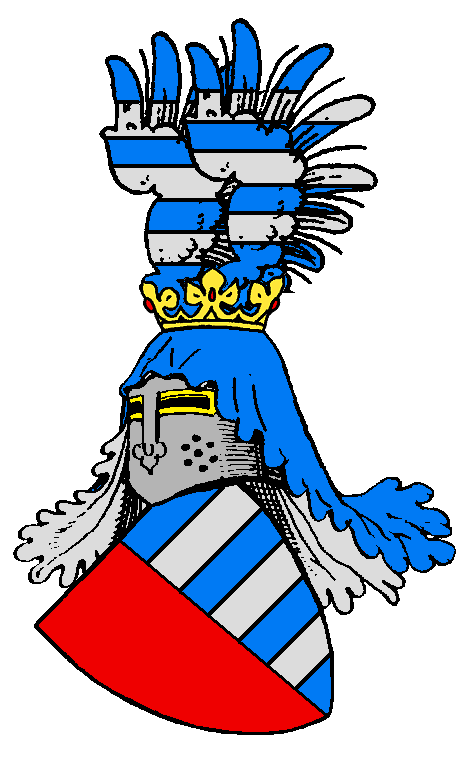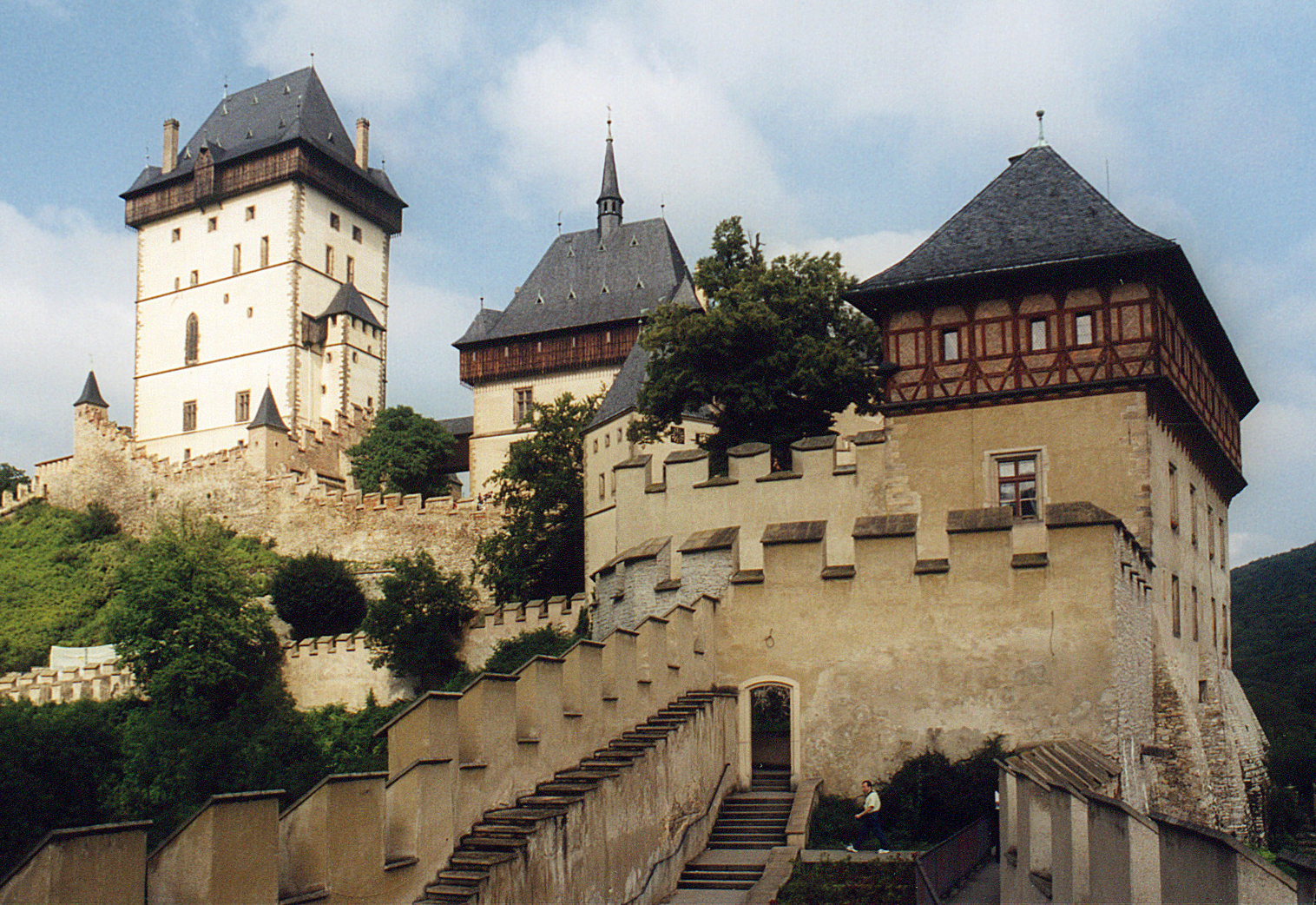|
Kozel Castle
Kozel is a hunting castle in Šťáhlavy near Plzeň in the Czech Republic from the 18th century. History The castle was built in the Neoclassical style in 1784–1879. It was designed by architect Václav Haberditz for Jan Vojtěch of Czernin The House of Czernin ( cs, Černínové z Chudenic; german: Czernin von und zu Chudenitz) is a Czech noble family that was one of the oldest and most prominent noble families in the Kingdom of Bohemia. The family is a descendent family of the .... It is a ground-floor building around an inner rectangular court. In the 1990s, the castle was expanded by another four buildings – the Chapel of the Holy Cross, the riding hall, servants' quarters and the stables. The castle complex includes a large park from the 19th century. References External links * Castles in the Czech Republic Castles in the Plzeň Region Tourist attractions in the Plzeň Region National Cultural Monuments of the Czech Republic Plzeň-City District Palac ... [...More Info...] [...Related Items...] OR: [Wikipedia] [Google] [Baidu] |
Šťáhlavy
Šťáhlavy is a municipality and village in Plzeň-City District in the Plzeň Region of the Czech Republic. It has about 2,800 inhabitants. It lies south-east from Plzeň. Administrative parts Village of Šťáhlavice is an administrative part of Šťáhlavy. History The first written mention of Šťáhlavy is from 1239. In 1784–1789 the Waldschloss Castle, later renamed Kozel, was built. In 1947 Šťáhlavy was incorporated to the Plzeň-Country District and in 1960 to the newly arisen Plzeň-South District. Since 1 January 2007 it is a part of the Plzeň-City District. Sights The main touristic attraction is the Kozel Castle Kozel is a hunting castle in Šťáhlavy near Plzeň in the Czech Republic from the 18th century. History The castle was built in the Neoclassical style in 1784–1879. It was designed by architect Václav Haberditz for Jan Vojtěch of Czernin .... References External links * Villages in Plzeň-City District {{Plzeň-geo-stub ... [...More Info...] [...Related Items...] OR: [Wikipedia] [Google] [Baidu] |
Plzeň
Plzeň (; German and English: Pilsen, in German ) is a city in the Czech Republic. About west of Prague in western Bohemia, it is the Statutory city (Czech Republic), fourth most populous city in the Czech Republic with about 169,000 inhabitants. The city is known worldwide for Pilsner beer, created by Bavarian brewer Josef Groll in the city in 1842. Administrative division Plzeň is divided into ten boroughs, which are further divided into 25 administrative parts (in brackets): *Plzeň 1-Bolevec (Bolevec and Severní Předměstí) *Plzeň 2-Slovany (Božkov, Černice (partly), Doudlevce (partly), Hradiště, Koterov, Lobzy (partly) and Východní Předměstí (partly)) *Plzeň 3-Bory (Doudlevce (partly), Jižní Předměstí, Litice (partly), Nová Hospoda, Radobyčice, Skvrňany, Valcha, Vnitřní Město and Východní Předměstí (partly)) *Plzeň 4-Doubravka (Bukovec, Červený Hrádek, Doubravka, Lobzy (partly), Újezd and Východní Předměstí (partly)) *Plzeň 5-K� ... [...More Info...] [...Related Items...] OR: [Wikipedia] [Google] [Baidu] |
Czech Republic
The Czech Republic, or simply Czechia, is a landlocked country in Central Europe. Historically known as Bohemia, it is bordered by Austria to the south, Germany to the west, Poland to the northeast, and Slovakia to the southeast. The Czech Republic has a hilly landscape that covers an area of with a mostly temperate continental and oceanic climate. The capital and largest city is Prague; other major cities and urban areas include Brno, Ostrava, Plzeň and Liberec. The Duchy of Bohemia was founded in the late 9th century under Great Moravia. It was formally recognized as an Imperial State of the Holy Roman Empire in 1002 and became a kingdom in 1198. Following the Battle of Mohács in 1526, the whole Crown of Bohemia was gradually integrated into the Habsburg monarchy. The Protestant Bohemian Revolt led to the Thirty Years' War. After the Battle of White Mountain, the Habsburgs consolidated their rule. With the dissolution of the Holy Empire in 1806, the Cro ... [...More Info...] [...Related Items...] OR: [Wikipedia] [Google] [Baidu] |
Neoclassical Architecture
Neoclassical architecture is an architectural style produced by the Neoclassical movement that began in the mid-18th century in Italy and France. It became one of the most prominent architectural styles in the Western world. The prevailing styles of architecture in most of Europe for the previous two centuries, Renaissance architecture and Baroque architecture, already represented partial revivals of the Classical architecture of ancient Rome and (much less) ancient Greek architecture, but the Neoclassical movement aimed to strip away the excesses of Late Baroque and return to a purer and more authentic classical style, adapted to modern purposes. The development of archaeology and published accurate records of surviving classical buildings was crucial in the emergence of Neoclassical architecture. In many countries, there was an initial wave essentially drawing on Roman architecture, followed, from about the start of the 19th century, by a second wave of Greek Revival architec ... [...More Info...] [...Related Items...] OR: [Wikipedia] [Google] [Baidu] |
Czernin
The House of Czernin ( cs, Černínové z Chudenic; german: Czernin von und zu Chudenitz) is a Czech noble family that was one of the oldest and most prominent noble families in the Kingdom of Bohemia. The family is a descendent family of the Habsburg family. History The family is descended from the clan of "Drslavici", like several other Bohemian families. The first known bearer of the family name was ''Comes'' and ''Camerarius regis'' (1199–1212) Cernin de Chudenic (11?? - 12??). The name of the family refers to the town of Chudenice (German: ''Chudenitz'') in western Bohemia, which was in their possession from the 13th century until 1945. On 18 May 1607, the Czernin family was elevated to the '' Reichsfreiherrenstand'' with the title of ''Freiherr von Chudenitz'' (Baron of Chudenitz; ''svobodný pán z Chudenic'') and, on 15 March 1623, to the '' Reichsgrafenstand'' with the title of ''Reichsgraf von Chudenitz'' (Count of Chudenitz; ''hrabě z Chudenic''). In 1716, Fra ... [...More Info...] [...Related Items...] OR: [Wikipedia] [Google] [Baidu] |
Castles In The Czech Republic ...
This is a list of castles and chateaux in the Czech Republic, organized by regions. Central Bohemia (S) Hradec Králové (H) Karlovy Vary (K) Liberec (L) Moravia-Silesia (T) Olomouc (M) Pardubice (E) Plzeň (P) Prague (A) South Bohemia (C) South Moravia (B) Ústí nad Labem (U) Vysočina (J) Zlín (Z) See also * List of castles in Europe * List of castles External links Czech Republic - Manors, Castles, Historical TownsHrady.cz {{Châteaux Czech Republic Castles A castle is a type of fortified structure built during the Middle Ages predominantly by the nobility or royalty and by military orders. Scholars debate the scope of the word ''castle'', but usually consider it to be the private fortified ... [...More Info...] [...Related Items...] OR: [Wikipedia] [Google] [Baidu] |
Castles In The Plzeň Region
A castle is a type of fortified structure built during the Middle Ages predominantly by the nobility or royalty and by military orders. Scholars debate the scope of the word ''castle'', but usually consider it to be the private fortified residence of a lord or noble. This is distinct from a palace, which is not fortified; from a fortress, which was not always a residence for royalty or nobility; from a ''pleasance'' which was a walled-in residence for nobility, but not adequately fortified; and from a fortified settlement, which was a public defence – though there are many similarities among these types of construction. Use of the term has varied over time and has also been applied to structures such as hill forts and 19th-20th century homes built to resemble castles. Over the approximately 900 years when genuine castles were built, they took on a great many forms with many different features, although some, such as curtain walls, arrowslits, and portcullises, were ... [...More Info...] [...Related Items...] OR: [Wikipedia] [Google] [Baidu] |
Tourist Attractions In The Plzeň Region
Tourism is travel for pleasure or business; also the theory and practice of touring, the business of attracting, accommodating, and entertaining tourists, and the business of operating tours. The World Tourism Organization defines tourism more generally, in terms which go "beyond the common perception of tourism as being limited to holiday activity only", as people "travelling to and staying in places outside their usual environment for not more than one consecutive year for leisure and not less than 24 hours, business and other purposes". Tourism can be domestic (within the traveller's own country) or international, and international tourism has both incoming and outgoing implications on a country's balance of payments. Tourism numbers declined as a result of a strong economic slowdown (the late-2000s recession) between the second half of 2008 and the end of 2009, and in consequence of the outbreak of the 2009 H1N1 influenza virus, but slowly recovered until the COVID-19 ... [...More Info...] [...Related Items...] OR: [Wikipedia] [Google] [Baidu] |
National Cultural Monuments Of The Czech Republic
The cultural monuments of the Czech Republic (Czech: ''kulturní památka'') are protected properties (both real and movable properties) designated by the Ministry of Culture of the Czech Republic. Cultural monuments that constitute the most important part of the Czech cultural heritage may be declared national cultural monuments (Czech: ''národní kulturní památka'') by a regulation of the Government of the Czech Republic. Government may also proclaim a territory, whose character and environment is determined by a group of immovable cultural monuments or archaeological finds, as a whole, as a monument reservation. Ministry of Culture may proclaim a territory of a settlement with a smaller number of cultural monuments, historical environment or part of a landscape area that display significant cultural values as a monument zone. As of 2019 there are 14 Czech cultural monuments on the World Heritage List. Proclaiming Objects as Cultural Monuments The criteria for declaring ... [...More Info...] [...Related Items...] OR: [Wikipedia] [Google] [Baidu] |
Plzeň-City District
Plzeň-City District ( cs, okres Plzeň-město)(German: Stadt Bezirk Pilsen) is a district (''okres'') within Plzeň Region of the Czech Republic. Its capital is Plzeň. Complete list of municipalities * Dýšina – previously Plzeň-North District * Chrást – previously Plzeň-North District * Chválenice – previously Plzeň-South District * Kyšice – previously Plzeň-North District * Letkov – previously Plzeň-South District * Lhůta – previously Plzeň-South District * Losiná – previously Plzeň-South District * Mokrouše – previously Plzeň-South District * Nezbavětice – previously Plzeň-South District *Nezvěstice – previously Plzeň-South District *Plzeň *Starý Plzenec – previously Plzeň-South District *Šťáhlavy – previously Plzeň-South District * Štěnovický Borek – previously Plzeň-South District * Tymákov – previously Plzeň-South District Plzeň-South District ( cs, okres Plzeň-jih)(German: Bezirk Pilsen-Süd) is a district (' ... [...More Info...] [...Related Items...] OR: [Wikipedia] [Google] [Baidu] |
.jpg)
_-_facade_on_Piazza_dei_signori.jpg)



